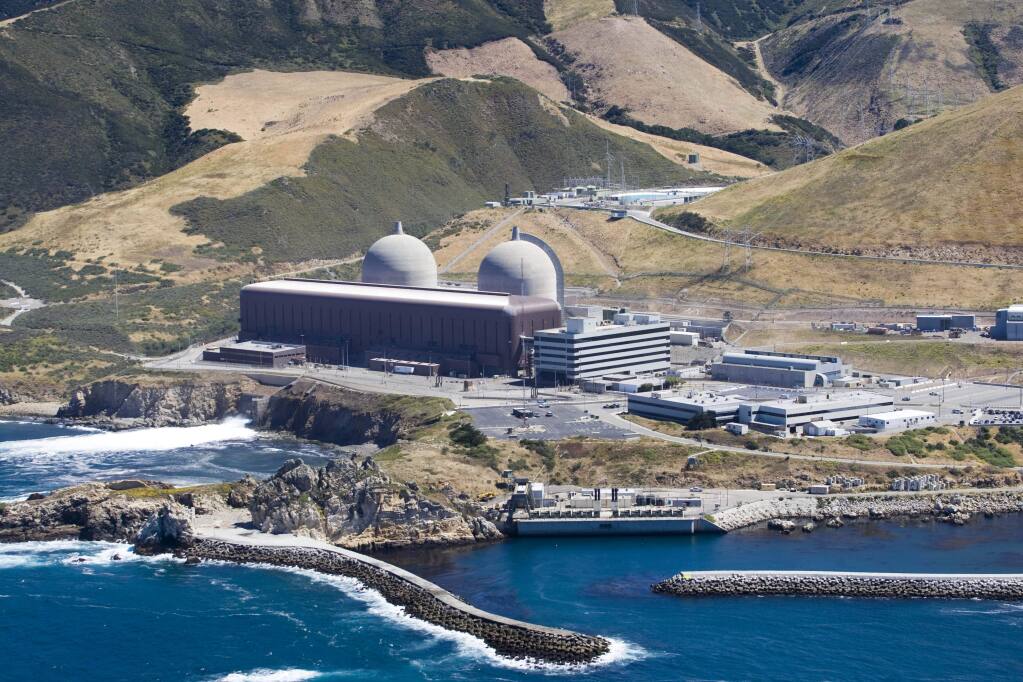For those who read my blog on Climate Change you may recall that Michael Shellenberger had changed my mind on the value for nuclear energy as a primary source of energy as a non- emitter of carbon. Nuclear power provides stability to the electric grid while emitting no carbons. It is essential that we have spinning generators, like nuclear, as the backbone of our electrical grid.
Nuclear is responsible for nearly 20% of America’s power generation and about half of its clean energy. California has only one nuclear plant still operating, Diablo Canyon. It is set to close in 2025. However, a growing change in attitudes toward nuclear power, particularly among climate change advocates has caused researchers to predict that keeping Diablo Canyon online until 2035 would cut emissions, bolster the grid’s reliability, and save the state $2.6bn. The analysis shows that Diablo’s continued operation would reduce the carbon emissions from power generation by 11% each year from 2017 levels. And unlike wind and solar power, nuclear energy provides a stable source of electricity unaffected by changes in weather. Federal support for nuclear power was also expressed by Jennifer Granholm, President Biden’s Energy Secretary, at the COP26 meeting when she stated that nuclear energy is an essential tool in decarbonizing the grid. Both Republicans and Democrats alike are excited about converting coal plants into nuclear power stations. There are plans under way to do that.
This enthusiasm should be tempered by the high initial cost and regulations for nuclear power. But that too, seems to be changing. The industry’s hope is being placed in small modular reactors (SMRs). Countries, notably China, are building out their nuclear capabilities. Even Saudi Arabia is getting into the game for the first time. France has new plans for small, modular reactors. Rolls-Royce, a British engineering company, is taking a similar approach. An American company, NuScale, signed a deal to sell six such reactors to Romania. Russia already has a floating SMR power station.
MSRs are not a new concept. Several decades ago, when I was directly involved in the electric utility business, Westinghouse designed and proposed to build a floating MSR apparently like the Russians claim they have in service. Nuclear designers have promised for years to build less expensive modular plants but for various reasons were never able to achieve that goal. Rolls-Royce thinks they can do it this time. They have formed a company involving Exelon Energy and other partners from France. They expect to build 16 new SMRs and develop a new business line. They may do it since this time they have the climate change requirement to meet zero carbon emissions in 2050. Nuclear Power nicely fits into that need while improving the reliability of the electric grid.
Earlier I mentioned Michael Shellenbereger. He produced his first book called Apocalypse Never in which he addresses Climate Change and other alarmist claims such as over-population, world-wide hunger, and other things which never occurred, despite the anxiety and fear those claims produced. He supports his case that climate change is real but it is not the end of the world; It is not even our most important environmental issue. This is a controversial issue in which both sides often claim they have the truth, which is one of the reasons I like his book and highly recommend it; it is a 300 page book with 200 pages of references/notes!
In his book he studied and compared the energy density of various fuels used my mankind over the years. Heat value is the amount of heat released during its combustion. Heat value is a measure of a fuel’s energy density, and is expressed in energy (joules) per specified amount (e.g. kilograms). He covers the environmental effects of each fuel and points out such comparisons as a kilogram of coal has almost twice as much energy as a kilogram of wood, petroleum has even more energy density, and so one until he reaches uranium in which he states that a small volume of uranium (about a handful) can power several cities for many years! Clearly nuclear power is a needed resource. Nuclear power’s safety record is better than most think. The nuclear waste rods are safely stored on each unit’s site. To date there seems to be no plan to safely dispose of solar panels that are no longer viable and which contain toxic materials.
To adequately meet the needs of the low carbon emission requirements of global generation, nuclear must play a major role. So, it is good that nuclear power is once again being considered as a viable option. While it necessary that we address climate change it is equally important that we maintain a reliable, and stable electric grid. Heavy reliance on solar and wind to provide electricity for the grid has already caused problems in England and other locations. It is essential that we meet both goals, low carbon emissions and a reliable electric grid. With the right mix of generation, we can do this. Nuclear and natural gas generation, along with wind and solar and hydro is the proper mix to achieve these goals.
Will Lannes

